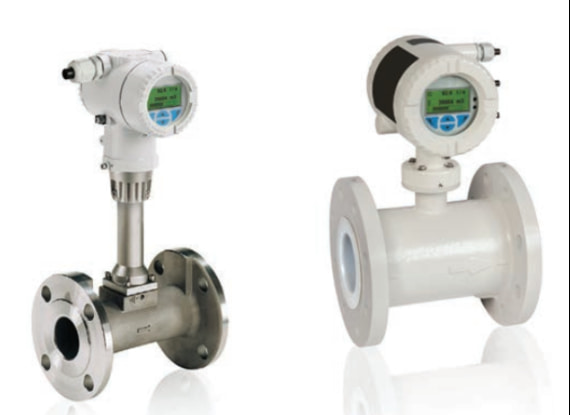
Conceptually, flow rate is the measure of volume (commonly in gallons, cubic meters or liters) or mass (commonly pounds or kilograms) of a fluid per unit time.
In the pump industry, volumetric flow rate (commonly gallons per minute [gpm]) is used to present the performance of a pump, which is typically based on a flow meter that senses velocity and calculates volumetric flow rate. Volumetric flow rate measurement can be as simple as measuring the volume change in a tank measured over a time interval to determine the average flow rate. Alternatively, meters that sense or indicate the instantaneous flow rate as it moves through the pipe (such as differential pressure, velocity/area, weirs, electromagnetic, ultrasound, electromagnetic flow meters and positive displacement types) may be used.

In certain applications, mass flow rate may be used, such as steam flow to a turbine electric generator or other applications where the mass of the fluid transferred or injected is important to the energy transfer or manufacture. Simplistically, average mass flow rate can be determined by measuring the weight change of a tank over time. Often, mass flow rate is calculated from volumetric flow rate based on the fluid’s density, but there are some flow meters that measure mass flow rate directly. Coriolis mass flow meters use vibrating tubes and their natural frequency to accurately correlate the vibration of the tubes to measure mass flow rate. Thermal mass flow meters use the principle of heat rejection, which is proportional to the mass flow rate of the fluid, to measure the mass flow. The American Society of Mechanical Engineers (ASME) and the International Standards Organization (ISO) publish standards covering these types of flow meters.
HI covers the instrumentation for pump performance testing in various ANSI approved standards. ANSI/HI 14.6 covers the hydraulic performance testing of rotodynamic pumps, with Appendix I covering guidance for flow rate with reference to the appropriate ASME and ISO standards. For more, refer to HI standard, Rotodynamic Pumps for Hydraulic Performance Acceptance Tests (ANSI/HI 14.6 [2022]) or equivalent standards at pumps.org.

